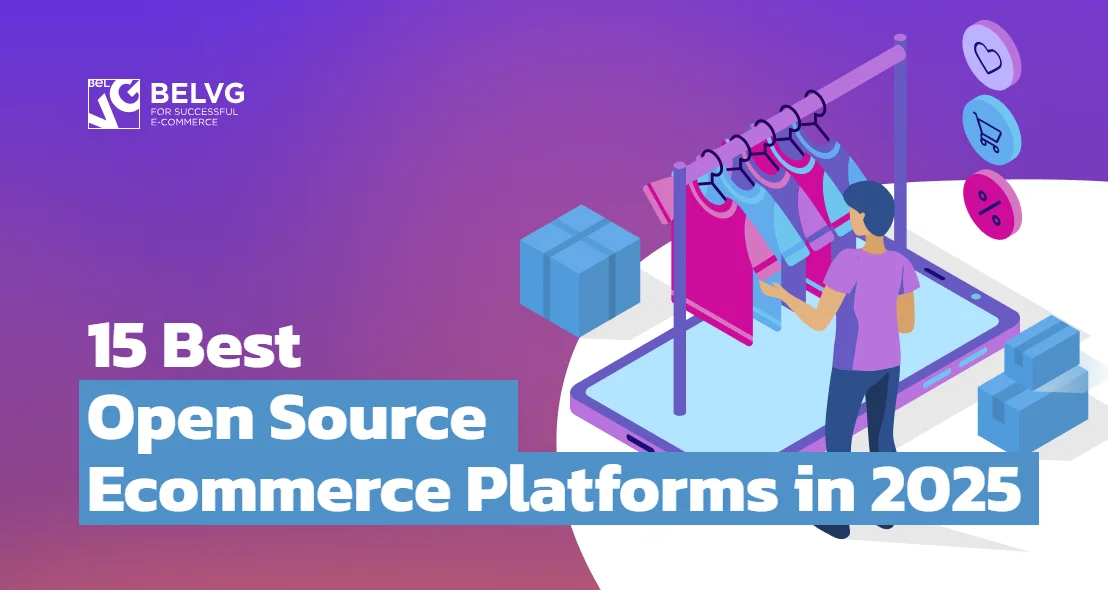
An ecommerce platform is a popular and effective solution for starting or expanding an online store, with minimum expenses and maximum profit. There is no need to rent a physical store at the beginning or to open more shops when scaling.
Ecommerce is in demand.
- In 2024, about 218.8 million US online buyers shop every day for $ 5.9 on average. It’s about 70 percent of the total 340 million population of the United States of America.
- About 2.64 billion people worldwide make at least one purchase online, and the number is growing.
Running an online store is a smooth way to reach a wider audience. By selling products online, you can serve customers around the world and provide access to people who may not have a physical store nearby.
As a result, you may have a rapid growth of the customer base and revenue x2 or x3 times in a short period.
The easiest way to launch a web store is to build it on an ecommerce platform. The platforms normally give ready-made solutions, where you fill in the necessary content.
An ecommerce platform also provides you with all the essential features and tools needed for your business’s promotion:
- Marketing
- Payment processing
- Product management
- Shipping
- Mobile Optimization
- Analytics
- Security
In this article, we will explore open source ecommerce platforms, define the difference between SaaS (software as a service) and ecommerce open source platforms, and enumerate the best open source ecommerce platforms in 2025.
Table of contents:
How to Choose The Best Ecommerce Platform for Your Business
SaaS vs. Open Source Ecommerce Platforms: the Difference
15 Best Open Source Ecommerce Platforms in 2025
Summing up
How to Choose The Best Ecommerce Platform for Your Business
Each ecommerce platform contains a basic set of features, so it is important to take into account your specific business needs.
For example, you may not need an inventory tool if your product line consists of only 10 items.
So, consider the following points before making an ecommerce platform decision.
Ease of Use
The top ecommerce platforms provide intuitive web design and e-store management. They offer a user-friendly admin panel that makes it easy to create and manage the website at the start of business and later delegate the admin panel to a manager whose services won’t be costly.
Responsive website design
In the first quarter of 2024, people made up to 63 percent of online orders through smartphones. This means that a good deal of users purchase via mobile devices. When choosing an ecommerce platform, consider whether it can be easily used on different devices, including smartphones and tablets. Knowing this fact will prevent you from spending money on adaptation.
Features
It’s important to examine the feature set offered by an ecommerce platform, such as built-in marketing tools, multicurrency, multiple languages, integrated payment systems, types of shipping, and more. Some platforms provide few features and push customers to buy their modules.
SEO capabilities
Every online store competes to be at the top of the first search pages. So, pay attention to ecommerce platforms that provide a wide range of built-in SEO tools for optimizing content and improving search engine rankings.
If there are no or few SEO tools included, it’s possible to add them by installing additional modules. However, there might be incompatibility issues with numerous modules produced by different developers.
Security
Ecommerce platforms must protect their customers. Personal information and payment data are always under threat of leaks and fraud. So, it’s critical to require strong security measures from an ecommerce platform, such as fraud prevention, SSL certification, data backups, PCI compliance, and regular security patch updates.
Scalability
Make sure the ecommerce platform you are choosing for an online store is scalable and has features that can accommodate the growth of your business in the future.
The Cost
Some ecommerce platforms, like Shopify, offer ready-made solutions at a fixed low monthly payment, while additional processing fees can be much higher. Therefore, it’s important to keep in mind the sales volume to determine the best cost of an ecommerce platform.
The market of ecommerce platforms is huge, so let’s study the most popular types of platforms before making a decision:
- SaaS
- Open source ecommerce solutions
Your choice depends on your budget, technical skills, and purposes. Once you have the clarity of all points, you’ll make the choice easily.
SaaS vs. Open Source Ecommerce Platforms: the Difference
If you are starting a web store, you have two options: to use an open-source platform or a SaaS platform.
Applying a SaaS platform is similar to buying an apartment. You can only move walls, zone the space, and decorate the apartment as you want.
Using an open-source platform is like buying a piece of land where you are free to construct a house with any number of rooms and floors, and additional buildings like a garage or warehouse in the future.
Let’s describe them in more detail.
The SaaS platforms
It is a cloud-ready solution that can be used by small and medium-sized business owners who have little or no coding experience. If you need a simple e-store launched just in a few days, the SaaS platform would be suitable for you.
The platform includes all the necessary features needed for starting and promoting a web shop in its basic package, and offers the opportunity to purchase extensions for scaling up.
You can create a website and design it using the provided templates, and the platform will maintain and host it for a monthly fee ranging from $30 to $399 and higher.
SaaS platforms are popular for their simplicity and cost $30 to $399. This fact has boosted the industry’s annual growth from $167,1 billion in 2022 to an expected $195,2 billion in 2024.
However, there are two drawbacks of using this type of ecommerce platform:
Lack of customizability
Online store owners do not have complete control over the website functionality as they do not have access to the source code.
Expensive subscription
The platforms can be expensive. The basic subscription might seem cheap at first glance. But as your shop grows, the more features you add, the more money you pay. In the end, your subscription may cost you thousands of dollars every year.
Examples of SaaS platforms: Shopify, Salesforce Commerce Cloud, BigCommerce.
Open Source Platforms
An open source platform is software that offers its source code for free downloading. You can build a PHP ecommerce website and modify it according to your business’s specific requirements.
The key difference between the open source platform and SaaS is that open source ecommerce CMS offers flexibility, scalability, and customizability in developing websites from scratch.
Another difference is that you are free to choose the type of hosting. You can prefer either hosting given by the platform or third-party hosting.
According to the statistics, the popularity of the open source ecommerce software will continue increasing.
In 2022, the global market size of open source ecommerce accounted for USD 28.3 billion, and by 2032 it will hit around USD 138.61 billion.
Ecommerce open source software normally provides its basic versions with a set of features to start an internet shop, but it doesn’t include installation, security, hosting, maintenance, and support.
So, there will appear extra costs for these services that you will need anyway.
Ecommerce open source platforms give you a choice – to use the platform’s features for a subscription fee or to use third-party’s services.
It is also possible to start from a basic free version of the ecommerce framework and add the features and modules you need while scaling.
Examples of open source platforms: Magento Open Source, PrestaShop, Shopware, and WooCommerce.
Let’s see the difference between the two types of ecommerce platforms in more detail.
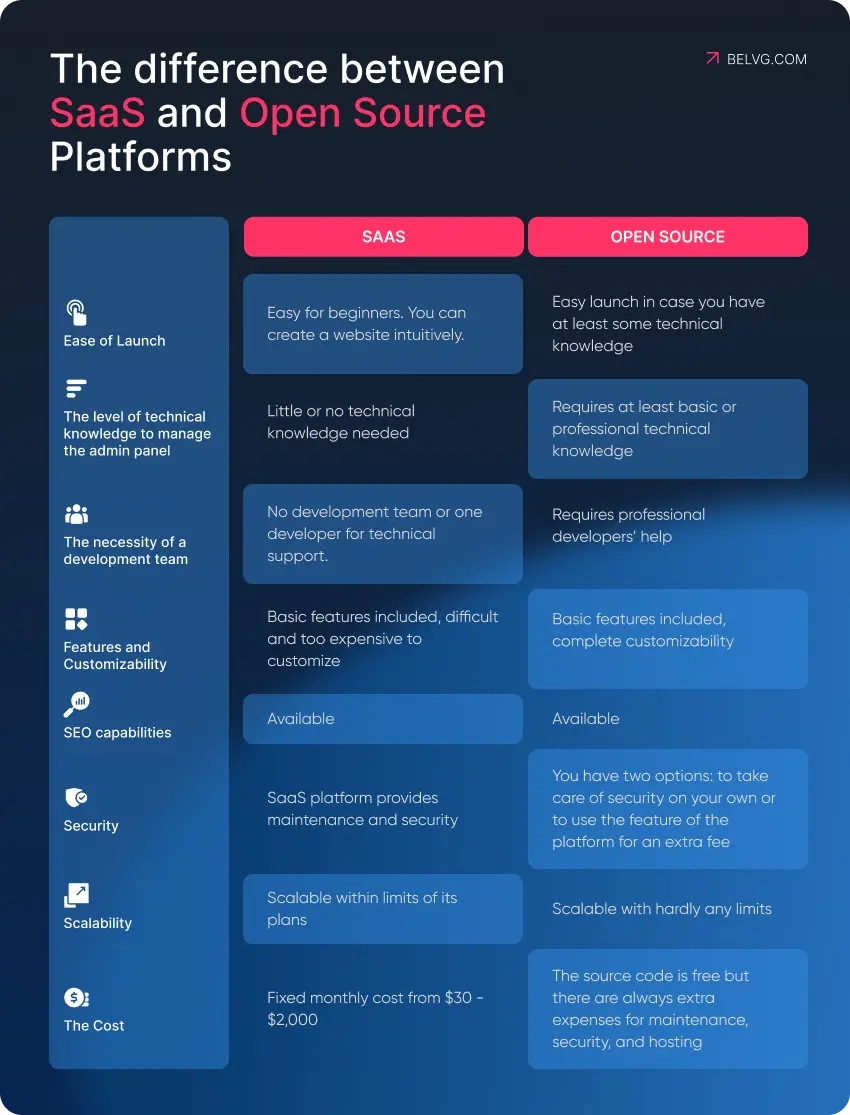
15 Best Open Source Ecommerce Platforms in 2025
There are many open source ecommerce platforms that offer options from shopping cart plugins to fully integrated front-end and back-end systems. Let’s examine the best open source ecommerce platforms in 2025.
1. Magento Open Source
Magento Open Source is a popular PHP-written ecommerce platform with about 210,000 users worldwide. It is possible to download its free open source code, create an online store website, customize it to your taste, sell products, and promote the store using basic built-in platform tools.
Magento Development
Enhance your online store with BelVG's Magento development services, tailored to meet your specific needs and optimize your e-commerce platform.
Visit the pageApart from the basic features, Magento has strong B2B and B2C instruments.
Customizable checkout
You can create your checkout page by adding different information: product details, billing, subtotal information, shipping, taxes, payment methods, addresses, and more. You can also add information with coupons or suggested products to interest the customers.
Guest checkout
Customers don’t need to create an account on the online store’s website and make purchases.
Page Builder
You can easily build your website page by dragging-and-dropping different blocks and buttons as you wish. After that you can add different elements of content such as banners, texts, images or videos.
Magento Multi-Store
This feature allows handling more than one online store via one Magento installation. You can create separate shops with different products, languages, and currencies for customers in other countries.
There is a great community of Magento users and developers. The market is full of various paid extensions available to make your website run smoother and scale in the future.
However, using the platform has some nuances:
- It demands technical knowledge. So, you will have to hire a development team like at BelVG company, which specializes in this platform.
- It doesn’t offer hosting, security, and support. It means that additional expenses will appear.
For those businesses that need a complex product catalog, multiple storefront management, or integration with third-party systems like CRM, there is an option from Magento, a licensed Adobe Commerce platform on the cloud or on-premise.
Conclusion
- Ease of use – not for beginners, admins and developers have to have an experience with Magento.
- Responsive design – the platform is mobile-friendly.
- Features – basic ecommerce features and a wide range of additional ones.
- SEO-features – provide all main SEO functionality.
- Security – patches are released regularly.
- Scalability – one of the most scalable and flexible open source platforms.
- Cost – costly to support, requires robust hosting and experienced developers. $80,000 – $150,000 a year to maintain
2. PrestaShop
PrestaShop is a platform with more than 300,000 users worldwide. It offers the ability to create an ecommerce store within 1 hour using its free open source code.

PrestaShop Development
Take your online store to the next level using PrestaShop development with BelVG
Visit the pageAmong a rich set of core features, we highlight the top ones.
Payment methods
You can accept different payment methods for your customers, including bank transfer, payment by cheque, and PrestaShop Checkout. The latter is a free module created in partnership with PayPal that makes it possible to accept payments by credit or debit cards in more than 20 currencies easily and securely.
SEO
PrestaShop differs from other platforms by its set of included SEO tools that help to improve the natural referencing of product catalogs. The key tools are the following:
- Local referencing on an online store. The instrument helps to promote an online store locally. It is helpful, especially for sellers who have both an online store and a point of sale.
- Natural referencing of the catalog by correctly filling in categories and product sheets.
- Catalog SEO optimization. It includes such tools as product name, title tag, description tag, simplified URL, images, accessories, and descriptions.
Localization
The platform provides adaptation to the local markets in particular countries that you target by implementing local currencies, languages, taxes, and time zones.
For your convenience, you can choose either an option with hosting included or the one without hosting.
Both options are open source and are free to install.
Conclusion
- Ease of use – a store admin with basic knowledge of CMS can handle it.
- Responsive design – usually PrestaShop themes require significant additional work on adaptive design.
- Features – basic ecommerce features and some additional ones such as multilingual and multi-currency opportunities, wide range of payment gateways.
- SEO-features – provides main SEO functionality.
- Security – patches are released regularly for newer versions.
- Scalability – the scalability is limited but still very wide.
- Cost – average to support, the developer’s hour is reasonable but often requires additional spending on theme customization. $50,000 – $100,000 a year to maintain and develop.
3. Shopware
Founded in Germany, Shopware is the leader of open ecommerce platforms in Europe.
Shopware is a flexible platform that can be used as a self-hosted ecommerce option or as a SaaS platform.
Shopware provides flexible and intuitive website development tools and offers innovative and comprehensive tooling for B2B and B2C sectors.
We’ll have a closer look at some instruments.
Rule Builder
It is possible to create your own rules to simplify strategic actions and automate regular workflows with no need for coding. For example, you can create a rule for customers to get a discount in the cart while shopping for more than $500.
Flow Builder
It is another feature to customize business processes with no coding knowledge. While the rule builder automates actions and single features, the flow builder automates processes reacting to special triggers. For example, sending newsletters in Spanish to Spanish-speaking customers.
Shopping Experiences
You can create attractive web store pages on your own, with 0 technical skills, just by drag-and-dropping the necessary blocks.
Net- / gross price display
The feature allows displaying prices on the page either to B2B or B2C sectors. They see the rates for products or services in the format that is most appropriate for them.
Conclusion
- Ease of use – a store admin with medium knowledge of CMS can handle it, store admin is able to set up most of the special rules in the shop. No coding needed.
- Responsive design – Shopware is mobile-friendly.
- Features – basic ecommerce features and some additional ones such as multilingual and multi-currency opportunities, wide range of payment gateways.
- SEO-features – provides main SEO functionality.
- Security – patches are released regularly for newer versions.
- Scalability – the scalability is limited but still very wide.
- Cost – Community Edition is free, SaaS solution costs start from $600 per month. To support the store, the developer’s hour is reasonable but often requires additional spending on theme customization. $50,000 – $100,000 a year to maintain and develop.
4. WooCommerce
WooCommerce is a free, open source PHP ecommerce plugin for WordPress. It is a popular choice for small and medium-sized businesses, with about 3.9 million websites built using websites running on WordPress.
WooCommerce offers a range of features and tools. Below we describe the most interesting ones.
Mobile App
It is possible to manage an e-store from a smartphone or a tablet adding new products, processing orders, and taking contactless payments.
Multi-channel ecommerce
You can promote your web store and sell products across multiple channels including Amazon, TikTok, Facebook, search engines like Google, and more.
Although it is highly customizable and expandable, WooCommerce has some serious drawbacks:
- Easy for beginners to understand and create a website, but hard to work and scale without professional help.
- According to the Sukuri Website Threat Research Report, WordPress was the leader among frequently infected platforms, accounting for 96.2% of infections in 2022.
- As the same Sucuri report informs, the WordPress platform was also more affected by credit card skimmers. 29,37% of credit card skimmers were found in the WooCommerce checkout page file.
Conclusion
- Ease of use – a store admin with no knowledge of the CMS can handle it
- Responsive design – WooCommerce is mobile-friendly.
- Features – integration with multiple sales channels
- SEO-features – provides strong SEO functionality.
- Security – Due to high popularity of the platform, it is prone to attacks
- Scalability – quite limited
- Cost – the platform is easy for developers on a basic level, but requires more skilled ones to make serious customizations.
5. Square Online
Square Online is a popular ecommerce software open source that is free to use and easy to start a business with.
This ecommerce framework is flexible for mobile sellers, small and mid-sized businesses, such as food trucks and fair vendors, online retailers, restaurateurs, and physical boutiques. It provides built-in inventory management, a point-of-sale (POS) system, and the possibility to accept online payments.
We can highlight the most essential features among the standard ones.
Square Virtual Terminal
It is a web-based payment processor that allows you to process credit and debit cards from a computer or laptop. In fact, you can accept payments via phone, mail, email, and text. It is ideal for remote billing or taking card payments over the phone.
Square Invoices
This feature represents invoicing software that gives you templates for creating invoices, which you can send, manage, and control from one place. You can track invoices that have been paid and the unpaid ones.
Conclusion
- Ease of use – a store admin with no knowledge of the CMS can handle it
- Responsive design – Square Online is mobile-friendly.
- Features – Square Online offers a Square Virtual Terminal feature that allows you to process credit and debit cards. Another feature is Square Invoices that gives templates of invoices.
- SEO-features – provide all main SEO functionality: items and categories for search engine results optimization, letting edit each individual page’s SEO.
- Security – patches are released regularly for newer versions
- Scalability – has limited scalability for large-scale stores
- Cost – The median hourly rate for Software Developers is $20 to customize a website.
6. OpenCart
There are about 946,636 OpenCart Customers including historical ones.
Hosted by Amazon, OpenCart is a free and easy-to-use PHP ecommerce platform that provides a professional foundation to small and mid-size businesses.
It is user-friendly and offers a rich selection of modules and themes to customize internet shops.
Let’s have a look at the most interesting basic tools introduced by OpenCart.
User Management
As an admin, you can assign and regulate administration-side permissions to other users or a group of users.
Multistore
It is possible to create more than one web store by creating a subdomain and managing it from one admin interface.
Payment Gateways
The platform offers 36 frequently used integrated payment systems including Authorize.Net, Amazon Payments, First Data, Klarna, LiqPay, Skrill, PayPal, and SagePay. More payment gateways are available in the extensions from the official marketplace.
Multilingual
OpenCart submits more than 40 language installations starting from Chinese and Japanese to Arabic.
Conclusion
- Ease of use – a store admin with little knowledge of the CMS can handle it.
- Responsive design – the platform is mobile-friendly.
- Features – The platform offers a variety of integrated payments systems. OpenCart also has more than 40 language installations.
- SEO-features – has limited SEO functionalities: allows the use of search engine optimized URLs and SEO keywords for product, category, manufacturer and information pages.
- Security – patches are released regularly for newer versions
- Scalability – highly scalable if working with a developer
- Cost – OpenCart is a free ecommerce platform that has paid plans from $59 up to $199 per month. Additional work and support of developers can cost from $150 to $1000 for 10 hours in a month.
7. NopCommerce
NopCommerce is a leading ASP.NET-hosted and based on Microsoft technologies ecommerce platform for all types of users. It enables clients to create open source online stores of any size.
The strength of the platform is in covering 100% of business needs including B2C, B2B, B2B2C, and D2C as well as providing all features for efficient sales locally and globally.
Except for the standard features, the platform offers small, medium, and global businesses several compelling instruments.
Multistore
You can run several web shops on different domains from the same admin panel. It’s possible to create unique or white-label shops for various brands, products, and services B2C or B2B, and launch microstores for promo campaigns.
Multi-vendor function
It allows you to create your own online marketplace where different people or businesses can sell their products or services having their profiles and additional content. The function also provides an unlimited number of vendors to register and offers different marketing activities like newsletters, banners, advertisements, discounts, and coupon issues.
A distinct disadvantage of NopCommerce is that the platform doesn’t offer any CMS features such as content management, multilingual support, or content editor. All these features are possible to install through extensions. Note that there may appear conflicts between extensions from different developers.
Conclusion
- Ease of use – the software requires development skills for using the platform.
- Responsive design – the software is mobile-friendly.
- Features – An admin can run several e-shops from the same admin panel. It also allows the creation of an online marketplace.
- SEO-features – provides main SEO functionality: customized URLs, HTML sitemaps, microdata integration, breadcrumbs, URL canonicalization, and Google Analytics integration.
- Security – patches are released regularly for newer versions.
- Scalability – quite limited
- Cost – NopCommerce is free to install, but its pre-installed version will cost $45 monthly.
8. Joomla
Joomla is a widely used ecommerce CMS with nearly 2 million active websites and a community of more than 200,000 people.
It is used not only for online store development, but also for creating, managing, and publishing different types of content for all sizes of businesses, governments, and large organizations.
With Joomla, it’s possible to develop websites, applications, templates, and extensions.
This CMS also has bright features that we describe below.
Template frameworks
Joomla provides developers with a set of pre-built components, modules, and plugins that allow them to create custom templates quickly and efficiently.
Redirect
It is a built-in tool allowing users to redirect URLs from no longer existing web pages to the ones that are working.
Joomla is completely free of charge. All extensions, documents, language packs, and updates are also free.
Conclusion
- Ease of use – requires experience with CMS and time to learn it.
- Responsive design – some templates are not responsive by default, so it’s better to hire a developer to edit the template code.
- Features – provides template frameworks for customization.
- SEO-features – poor SEO functions; for some settings you need to buy plugins.
- Security – has several security features: a two-factor authentication, a password strength meter, a built-in anti-spam system, and tools for monitoring and auditing.
- Scalability – Joomla is scalable in terms of registered users, content, etc
- Cost – Additional work and support of developers can cost $30 – $100 per hour. It’s unlikely that 5-10 hours a month will be enough, so you need at least 40 hours.
9. Wix Ecommerce
Wix Commerce is a cloud-based eCommerce platform that allows creating a fully customizable eCommerce website without coding. More than 2.9 million websites were built on this open source platform.
The platform has an intuitive interface, which affords building a web shop to beginners.
Particular features of Wix Commerce are:
Plans and recurring payments
The feature gives the possibility to generate recurring payment plans, free plans, and one-time payment plans for the services or products on a regular basis. You can set up a free trial, arrange payment frequency and plan limits, and gain stable revenue from subscriptions.
Abandoned cart recovery
When a customer adds products to his cart and leaves the webstore without making a purchase, Wix Commerce offers to send him special automated recovery emails with pictures and special offers for the products that are in his cart.
Wix Commerce has a free version and paid plans with the platform’s included hosting. The free version is always available with Wix ads, so paid plans are more suitable.
Conclusion
- Ease of use – a beginner can handle it. No technical knowledge needed.
- Responsive design – compatible with mobile devices.
- Features – makes it possible to create various types of payment plans for services or products. Wix Commerce also can send automated abandoned cart emails.
- SEO-features – has limited SEO functionalities. Websites created using this platform are not indexed by search engines such as Google.
- Security – patches are released regularly for newer versions. Additional work is required on security, because such websites are often attacked
- Scalability – has limited scalability.
- Cost – Pricing starts from monthly payments of $16 up to $159. The Enterprise package price is set up under request. The average cost of a developer is between $15 and $34 per hour.
10. Ecwid
Ecwid is also one of the best ecommerce open source platforms. Like WooCommerce, it can be integrated with the platform you are already using to make your website ecommerce. It is easy to understand and use, requires no transaction fees, and offers a completely free plan apart from paid ones.
The platform provides basic features, and the most attractive are the smart shipping calculator and easy checkout.
The Smart shipping calculator feature is interesting because of its ability to calculate the costs of shipping, choose the best options, and optimize spendings.
Easy checkout is a secure one-page checkout where a customer fills in necessary information like shipping and payment details while making an order. The checkout page consists of several steps. If you need additional information from the customers, you can add extra fields to any step, and the shopper will complete it.
You can set up an online shop on the existing website and sell your products or services. The platform synchronizes inventory and orders. So you can keep all your products from running out.
Conclusion
- Ease of use – a store admin with no knowledge of the CMS can handle it.
- Responsive design – The platform is mobile-friendly.
- Features – Ecwid helps to calculate the costs of shipping with the Smart shipping calculator. Easy checkout feature allows you to add extra fields to any step while filling in necessary information to make an order.
- SEO-features – provides main SEO functionality: adds keywords and custom tags, collects reviews from customers, etc. It depends on the original platform with which it is integrated.
- Security – patches are released regularly for newer versions.
- Scalability – quite limited
- Cost – has a completely free plan, the paid ones vary from $14.08 to $82.50 per month. The average cost of a developer is between $25 and $150 per hour.
11. Drupal Commerce
Drupal Commerce is an open source framework built on the basis of Drupal CMS and focuses on the development of websites and applications that people use every day.
It is highly customizable and offers a lot of room for creativity. It has a large professional online community and built-in queries, forums, and multi-blogs, which make it easy to get started.
The platform stands out for its flexibility and modularity. With the help of the smart tools, you will get a good user experience and more profit.
Multichannel marketing is one of the coolest features of Drupal Commerce, allowing online store owners to reach a wider audience by spreading products or services across multiple channels. They include email marketing, social media marketing, and web push notifications.
Customizable shopping cart
A shopping cart block can be put in any place on the website, show the customer the number of items and the sum, and manage their current order by adding or removing items.
Drupal Commerce is free. You pay only for website development, hosting, and for the modules to install.
Conclusion
- Ease of use – the platform is difficult to learn.
- Responsive design – the help of a professional developer is needed to integrate the website for mobile devices.
- Features – Drupal Commerce offers multichannel marketing, which helps to spread products across multiple channels. The software also has a customizable shopping cart that you can put in any place on the website.
- SEO-features –includes SEO features like clean URLs, page speed optimization, mobile optimization, customizable metatags, and more.
- Security – patches are released regularly for newer versions.
- Scalability – quite limited
- Cost – The use of the platform is free. Only website development, hosting and modules are paid. The average cost of a developer is between $50 and $150 per hour.
12. Spree Commerce
Spree Commerce is another completely free and open source ecommerce platform for users with knowledge of coding or developers. It is possible to build an e-store and manage it by adding, replacing, or removing any functionality.
There are two interesting features in the basic package of Spree Commerce.
Returns
The customer should have the chance to make a return, especially when the product was damaged during shipping.
With a returns feature, you can arrange rules on what products the customers can return, how and when.
Wishlists
This feature is a tool to improve customer experience and satisfaction. You can control what products are in demand, send shoppers offers for wishlist products, and let the customers share their wishlists with other users for gift shopping.
To create a website, it is better to hire a development team or a company that specializes in ecommerce software development. Creating a web shop with little coding skills is hardly possible.
Conclusion
- Ease of use – not for beginners, developers with ecommerce software knowledge can handle it.
- Responsive design – The software is mobile-friendly.
- Features – Spree Commerce allows to set the rules on what customers can return. The Wishlist feature helps to find out what products are in demand and send shoppers offers for wishlist products.
- SEO-features – provides advanced SEO functionality: up-to-date sitemaps, speed optimization with full-page or fragment caching, product pages with keywords infusion, and more.
- Security – patches are released regularly for newer versions
- Scalability – has limited scalability
- Cost – The platform is free, but you need to hire developers for website support.
13. Zen Cart
Zen Cart is also fully free and user-friendly shopping cart software that can be installed on your online store no matter which platform it was developed on.
It has been installed on more than 443,373 websites. Zen Cart offers a range of instruments to streamline online business operations.
One of the most important features is easy integration with current payment gateways.
Zen Cart offers built-in payment modules including AIM, Check/Money Order, Cash on Delivery, Free Order, PayPal, and dozens of free modules in the software’s marketplace.
Another essential feature is built-in reports. There are several categories of reports that help you to collect data about your customers and products. You can check:
- customers orders-total
- customers referral
- products purchased and low stock
- products viewed
- sales report in graphical and tabular format.
The software provides potential benefits ranging from improved conversion rates and increased customer retention to efficient inventory management.
Conclusion
- Ease of use – a store admin with some knowledge of the CMS can handle it.
- Responsive design – The platform is mobile-friendly.
- Features – Zen Cart has integration with current payment gateways on the platform. It also offers a built-in reports feature that helps to collect data about customers and products.
- SEO-features – has a few SEO-features like generation of metatags content.
- Security – only administrative personnel can access the customer/catalog data
- Scalability – highly scalable
- Cost – The software is free, you should only pay for modules.
14. X-Cart
X-Cart is an open source eCommerce platform that has been around for over 20 years.
It is designed to help businesses create and manage their web stores, and improve user experience.
The platform guarantees that your online store will be safe by offering extended security features.
- An extra layer of protection is provided by the PCI Level 1 Certified platform.
- HTTPS/SSL support stands for safe checkout and secure connections.
- XSS- and CSRF-attack protection, protection against SQL-injections control that all the requests to the database are safe.
- Two-factor authentication gives additional security to the website.
X-Cart is quite customizable and scalable, but it requires knowledge of HTML coding. Another point you should take into consideration is that the potential of the admin panel in content management is poor. So, if you need a unique design for your online store, you will definitely have to upgrade it with developers’ help.
The platform is used by small, mid-sized businesses, and large enterprises wanting to establish global brands.
Conclusion
- Ease of use – not for beginners, requires knowledge of HTML to handle it.
- Responsive design – X-Cart is mobile friendly.
- Features – offers security features like extra layer of protection, safe checkout and secure connections, attack protection, and more.
- SEO-features – has some SEO-functionality such as configurable page titles and clean URLs.
- Security – patches are released regularly for newer versions.
- Scalability – highly scalable
- Cost – The platform costs $199 per month. The average cost of a developer is about $40 per hour.
15. Solidus
Solidus is an open source ecommerce platform powered by the Ruby on Rails framework. The platform offers its services to high-volume retailers who need fully customizable and flexible online stores.
If you’re new to building websites or don’t have much technical knowledge, Solidus may not be the best option for you. However, if you’re looking for a platform that can grow and scale with your business, Solidus is a great choice.
Solidus offers a wide range of features, including one of the most essential tools such as automated tax calculation.
The tax calculator is based on the Spree adjustment model and counts all the hidden costs that depend on tax categories, zones, and tax rates. You don’t need to count on your own the taxation rates of different regions for particular products. The system does it automatically.
Solidus offers three plans for use. You can download the source code and use your own hosting or use the paid plans offered by the platform.
Conclusion
- Ease of use – not for beginners, requires technical knowledge to handle it.
- Responsive design – the platform is mobile-friendly.
- Features – offers an automated tax calculation feature that helps count taxation rates of different regions for particular products.
- SEO-features – its extension provides a few SEO-features such as adding common-sense defaults for structured data, meta tags, Open Graph protocol, and image optimization.
- Security – patches are released regularly for newer versions.
- Scalability – highly scalable
- Cost – DIY version of Solidus is free, the other two plans are set up under request.
As you can see, there are many open source ecommerce platforms to choose from. However, defining the right one is not always easy. The real struggles come when you need to upgrade, scale, or better customize your online store or integrate some third-party extensions.
So, it is better to consider your needs and goals beforehand rather than pay for mistakes later.
Summing up
It is crucial to select the right open source ecommerce platform for your web store and business as a whole.
Open source platforms offer their source code for free and require you to host and protect your online store. Additionally, some platforms provide paid plans with extended features, including hosting and security, but these fees can be quite costly per year.
The right open source platform for you will be the one that corresponds:
- your business goals and needs
- your budget
- your requirements in features and built-in tools
- your skills and abilities
Just make sure the platform you choose matches all the points and then start building your internet shop.
A good idea is to seek the advice of an experienced ecommerce software development company like BelVG. We can provide an independent point of view, discuss all the options that would fit your business idea, and help you get a well-developed, robust online store together with maintenance and support.
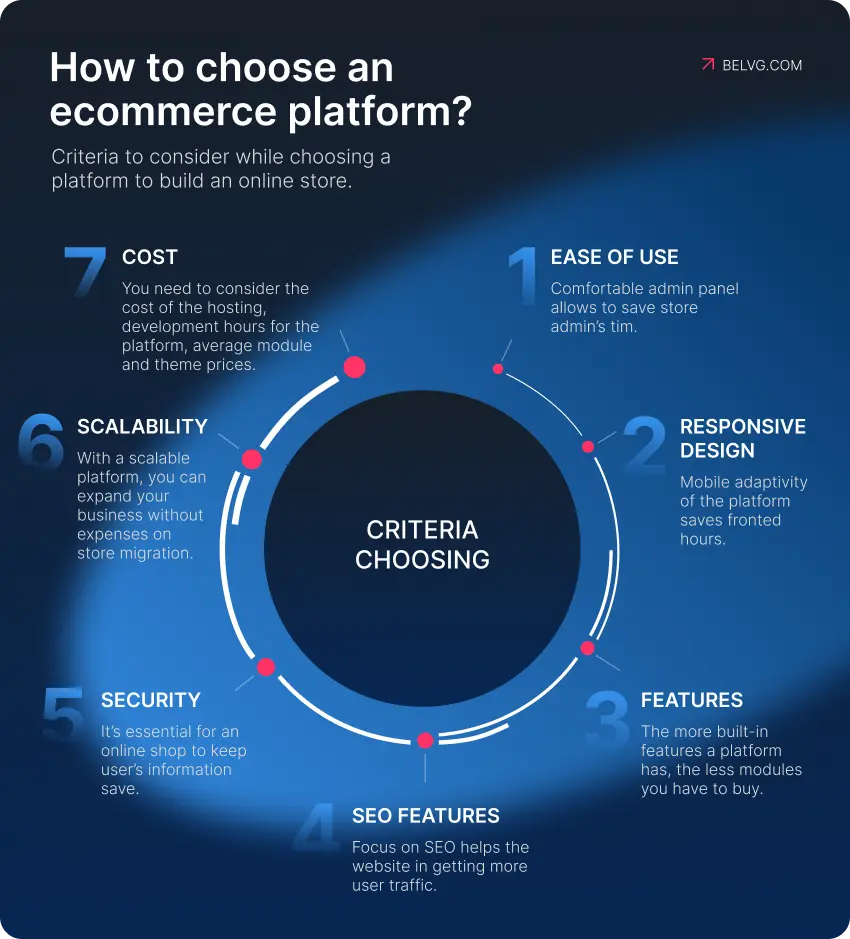
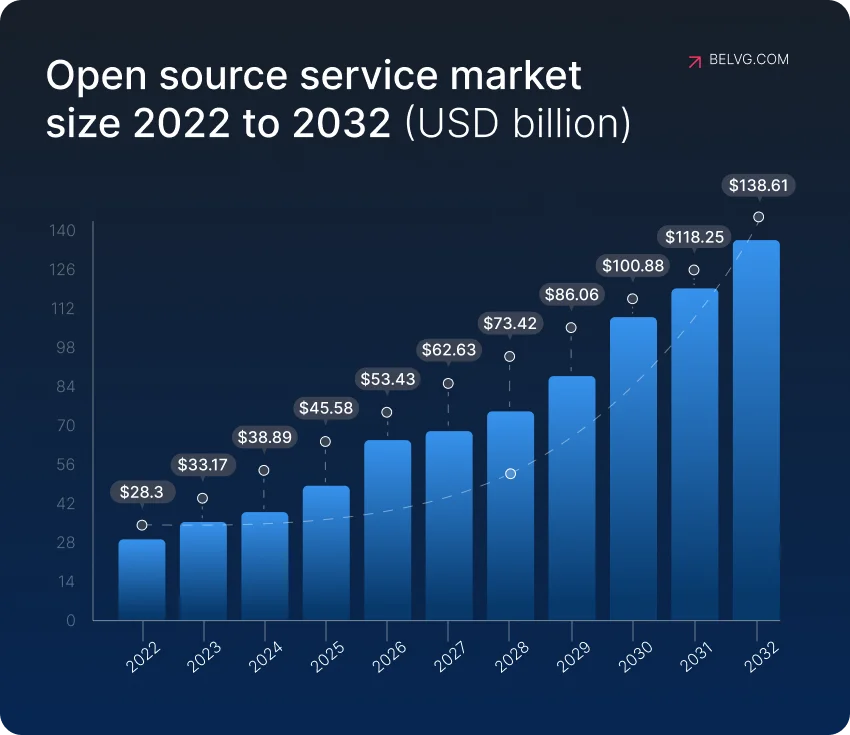
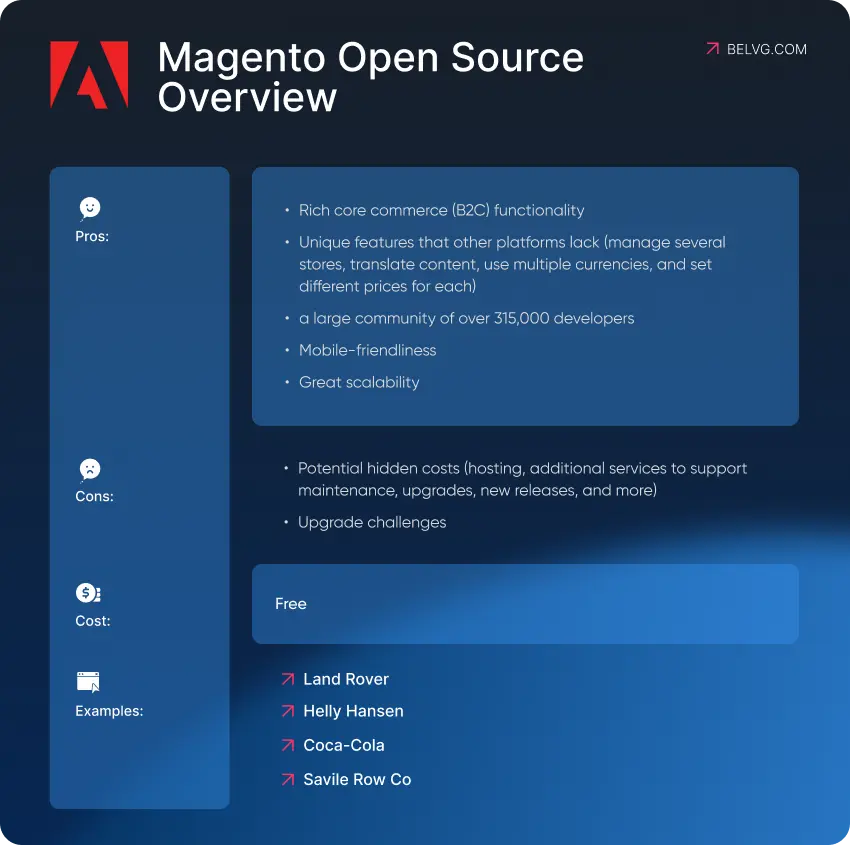
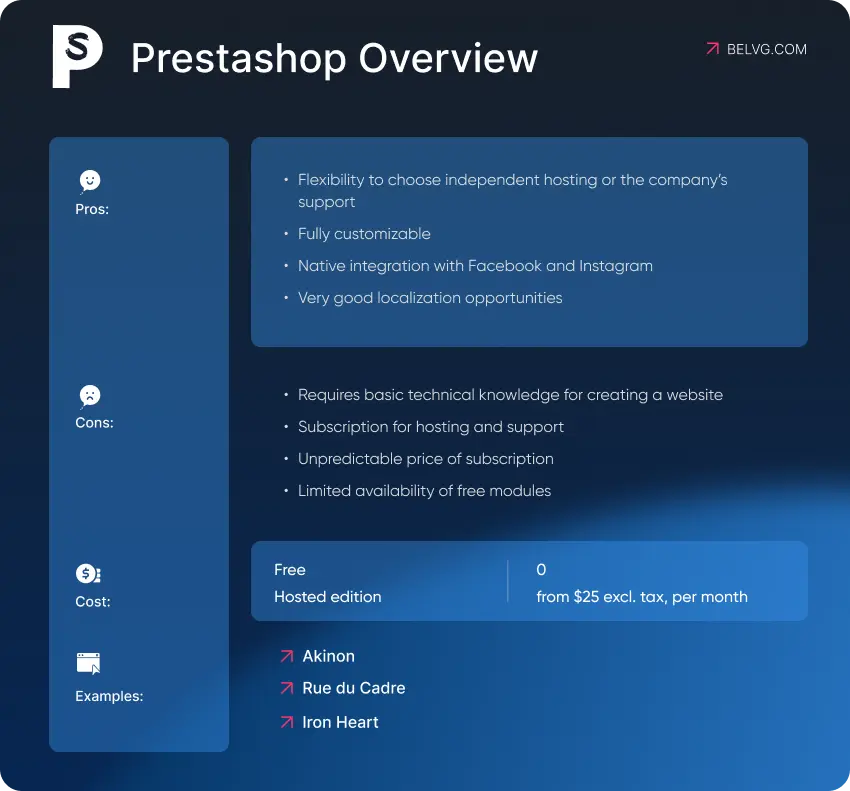
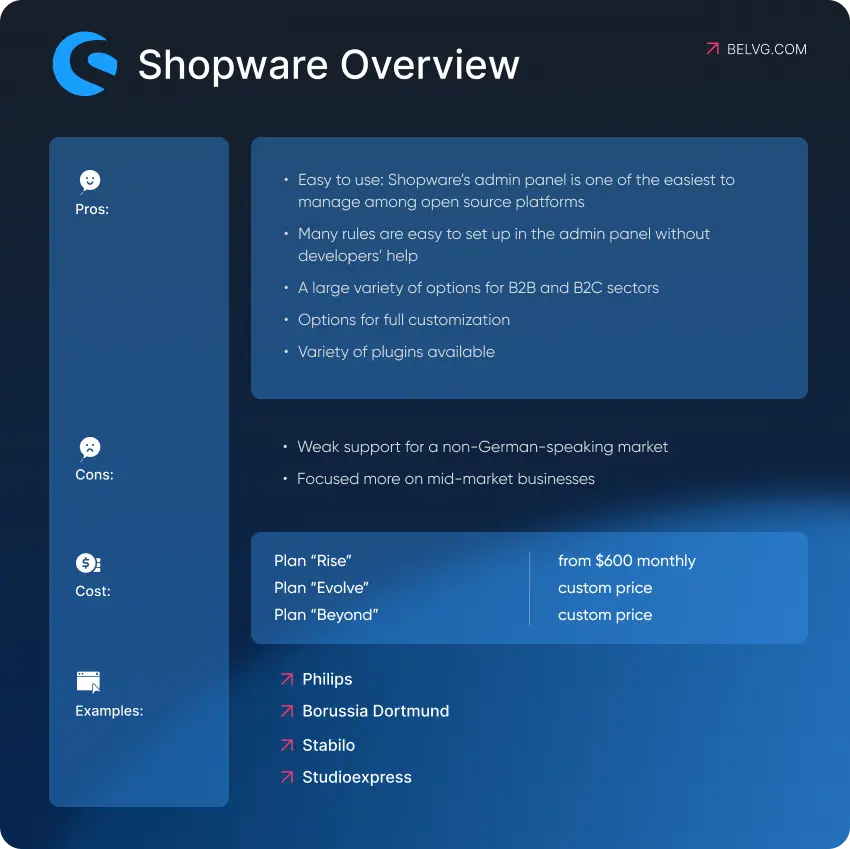
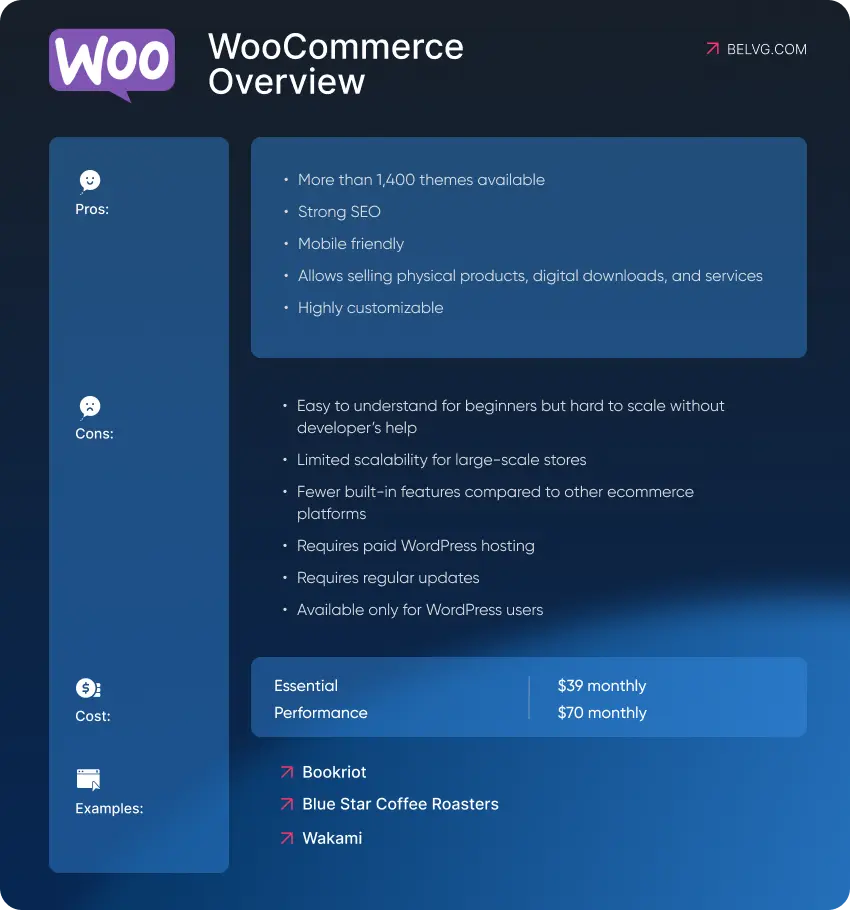
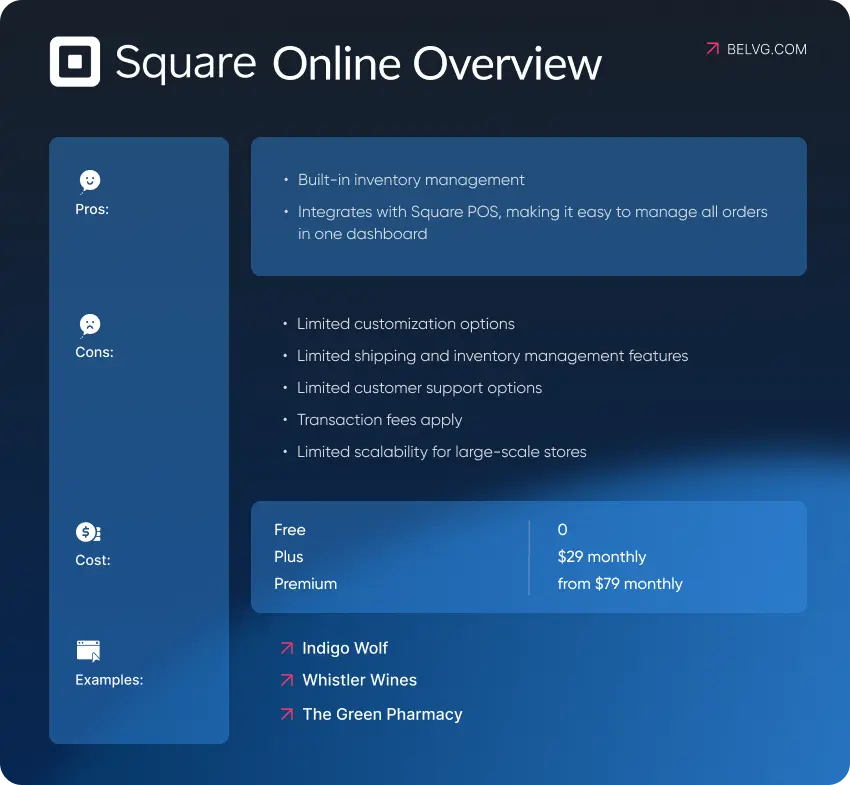


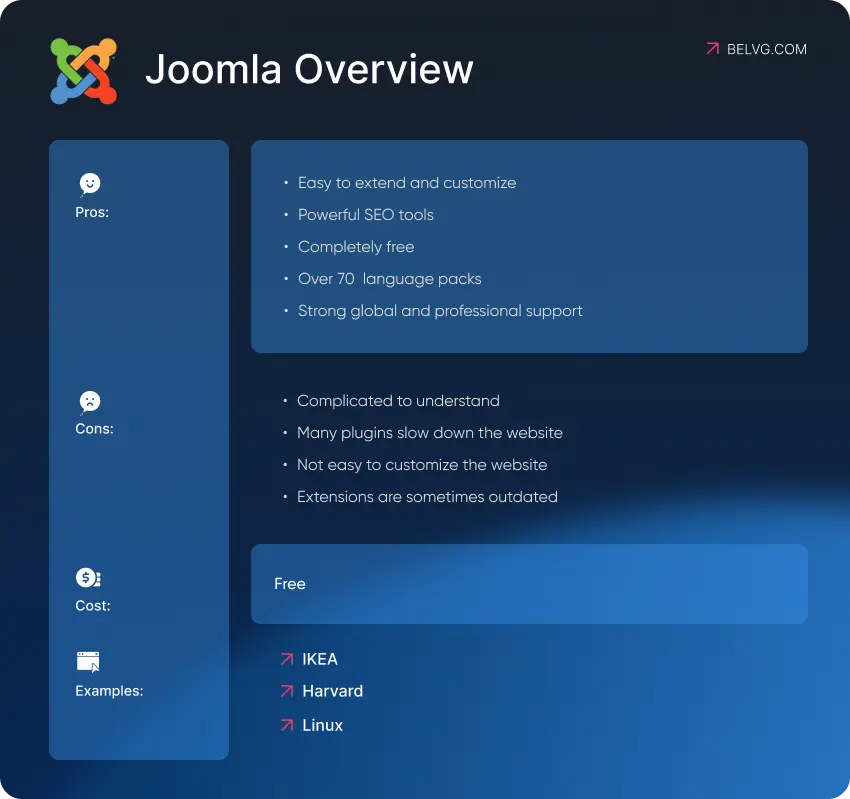
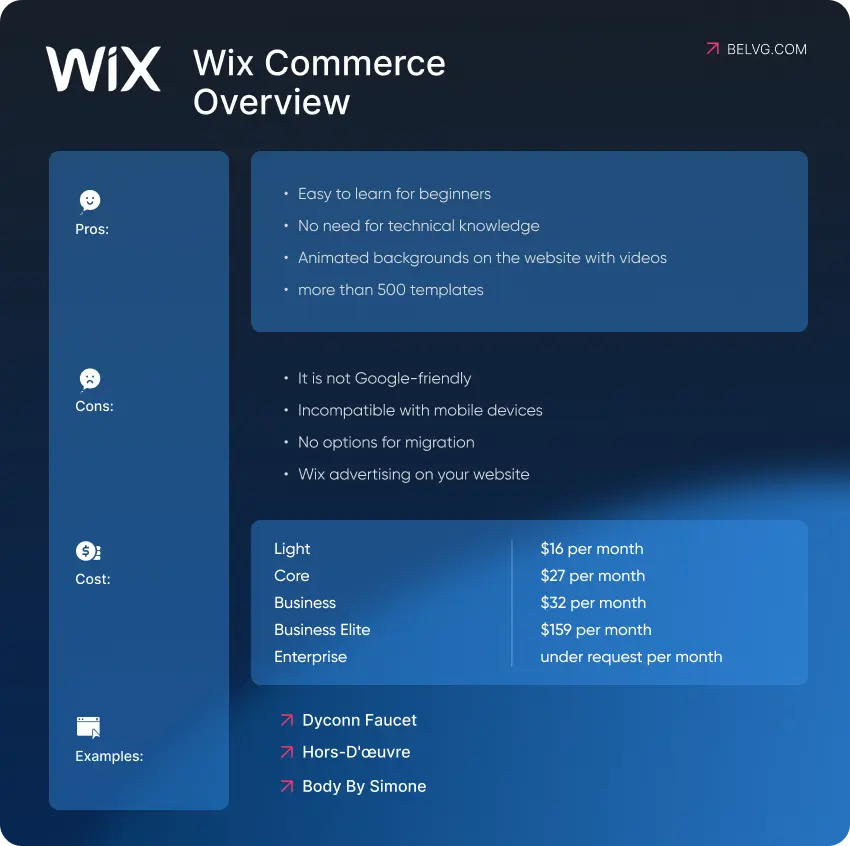

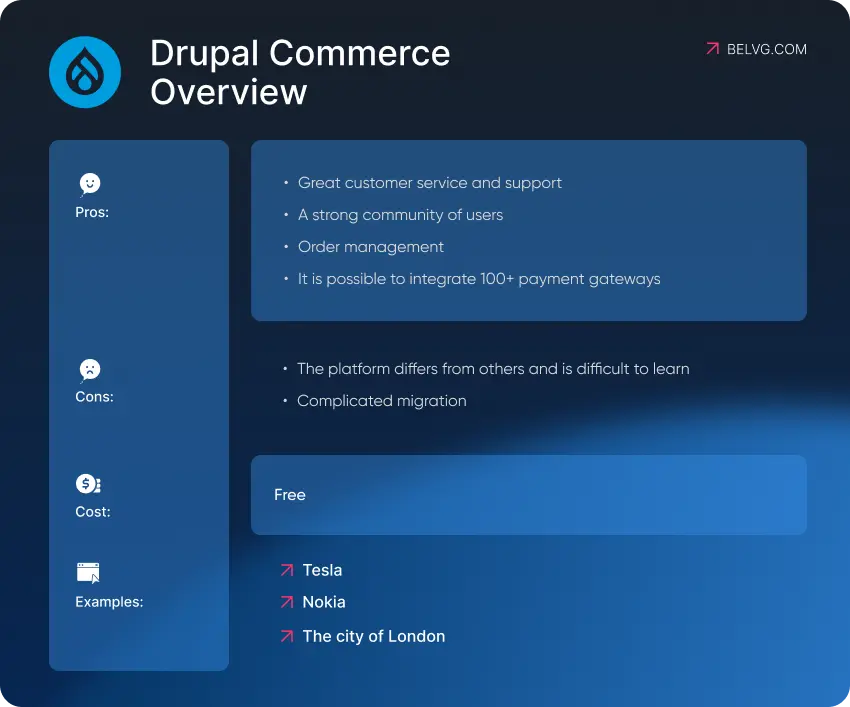
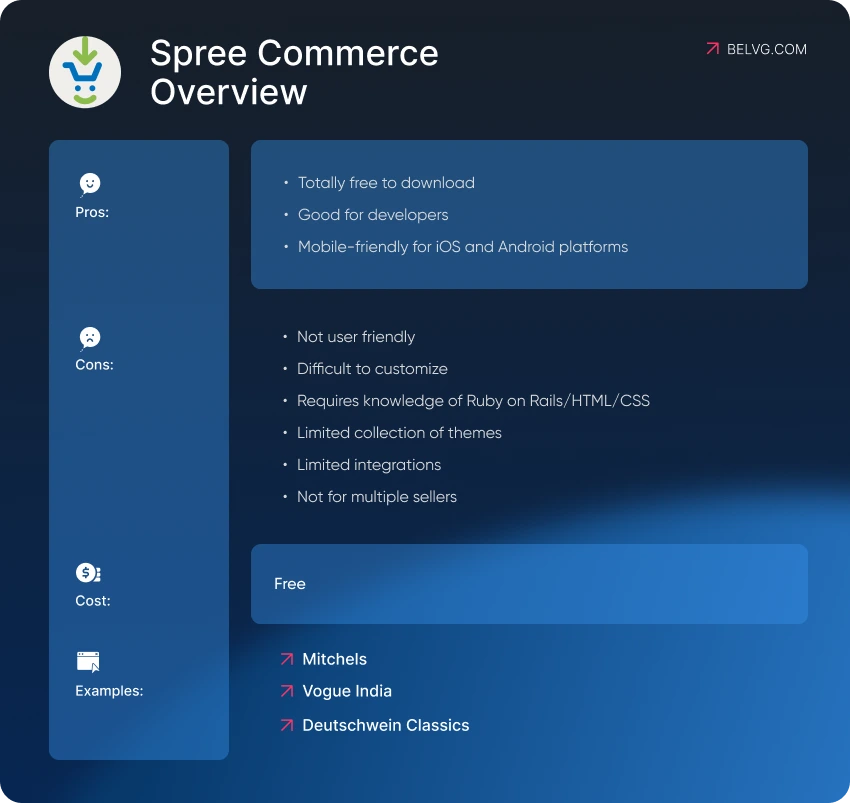
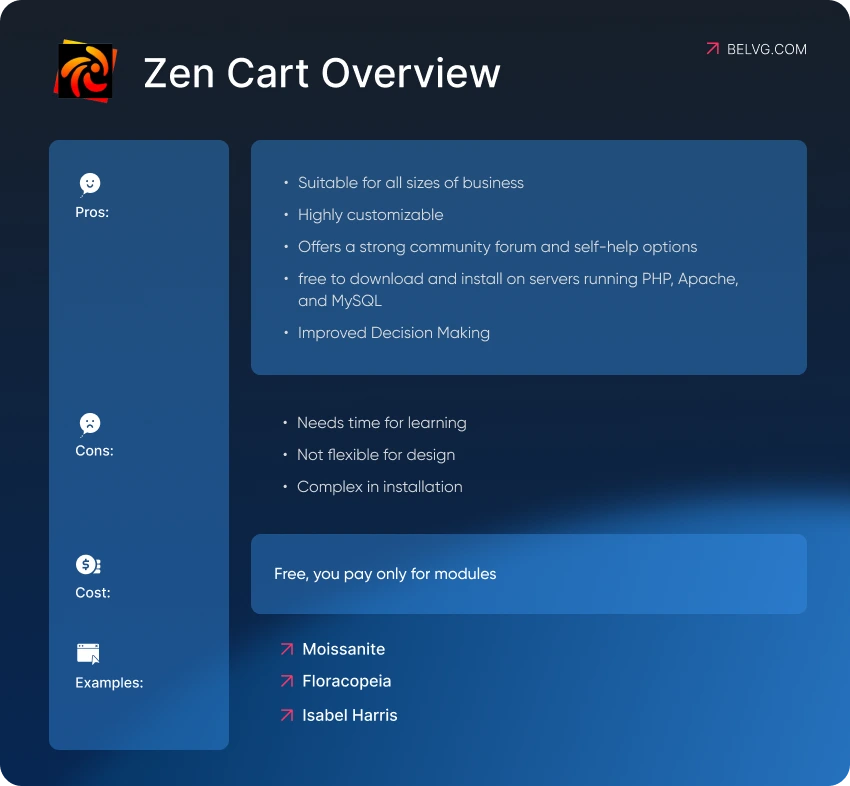
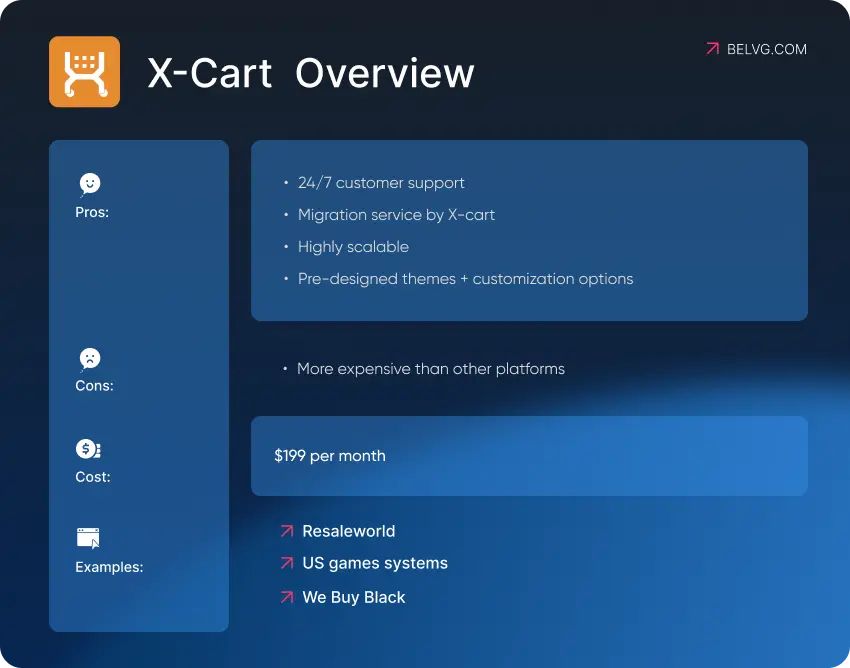
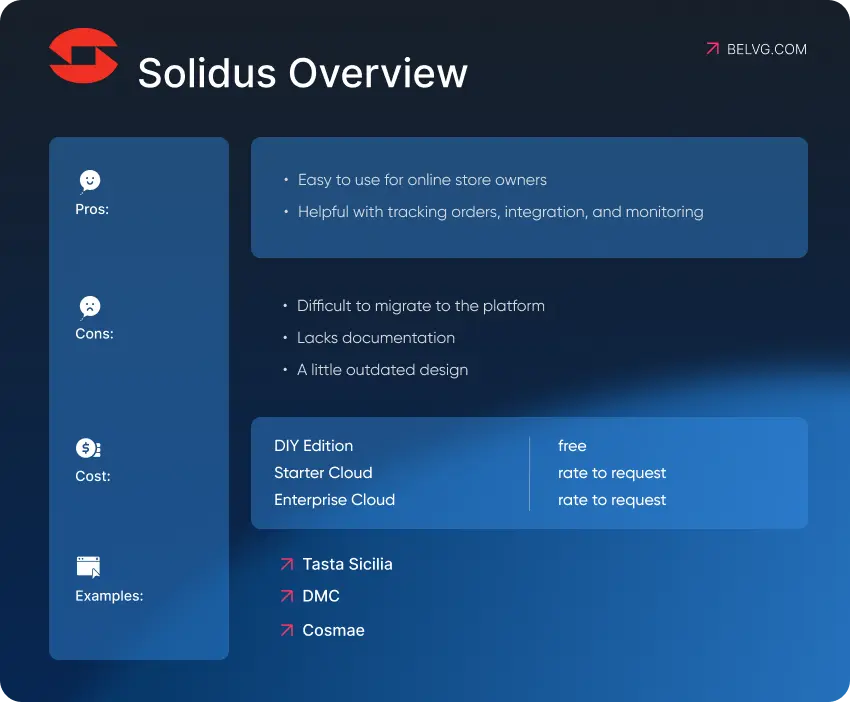




Good stuff, every point is really helpful.
Thanks for sharing the quality information.
Your blog was absolutely fantastic! Large amount of great information which is often attractive some and the other way.Thanks.
Thanks for sharing your information. Did you know about Spurtcommerce?
Spurtcommerce, B2C and B2B Opensource eCommerce solutions, built on the latest technologies of NodeJS and Angular, can be completely customized for your requirement.
Your post is very informative.